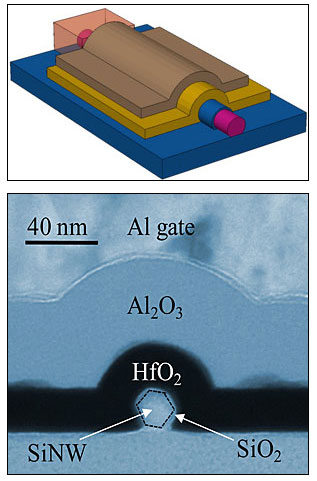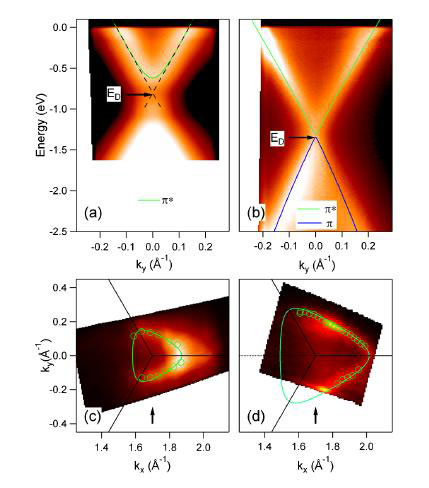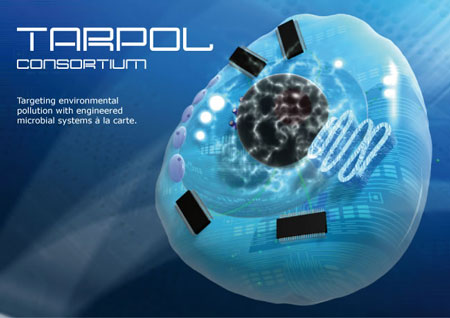Researchers have developed a technique, exploiting a specific defect in the lattice structure of diamond, to externally detect the spins of individual molecules.
May 19th, 2011
Read more
 Scientists built a scaffold-looking structure consisting of carbon nanofibers and a government-approved polymer. Tests showed the synthetic nanopatch regenerated natural heart tissue cells - called cardiomyocytes - as well as neurons. In short, the tests showed that a dead region of the heart can be brought back to life.
Scientists built a scaffold-looking structure consisting of carbon nanofibers and a government-approved polymer. Tests showed the synthetic nanopatch regenerated natural heart tissue cells - called cardiomyocytes - as well as neurons. In short, the tests showed that a dead region of the heart can be brought back to life.
May 19th, 2011
Read more
International Microfluidic Consortium driving standardization activities for solutions in healthcare, environmental applications, and beyond.
May 19th, 2011
Read more
 A recent study at the National Institute of Standards and Technology (NIST) may have revealed the optimal characteristics for a new type of computer memory now under development.
A recent study at the National Institute of Standards and Technology (NIST) may have revealed the optimal characteristics for a new type of computer memory now under development.
May 19th, 2011
Read more
Researchers from the University of Iowa Roy J. and Lucille A. Carver College of Medicine have found that inhaled carbon black nanoparticles create a double source of inflammation in the lungs.
May 18th, 2011
Read more
Join friends old and new this summer at Google's Mountain View headquarters in Silicon Valley as the Foresight Institute explores the future of nanotechnology with a rockstar lineup of nanotech experts and entrepreneurs.
May 18th, 2011
Read more
 Researchers from the Brookhaven National Laboratory, in collaboration with the London Centre for Nanotechnology, have mapped the electronic structure of superconducting GIC, KC8 and non-superconducting LiC6.
Researchers from the Brookhaven National Laboratory, in collaboration with the London Centre for Nanotechnology, have mapped the electronic structure of superconducting GIC, KC8 and non-superconducting LiC6.
May 18th, 2011
Read more
Scientists from the University of Sheffield have developed pigment-free, intensely coloured polymer materials, which could provide new, anti-counterfeit devices on passports or banknotes due to their difficulty to copy.
May 18th, 2011
Read more
Wichtige Details zur molekularen Entschluesselung der Struktur von Zellmembranen beschreibt eine soeben erschienene Publikation des Forscherteams um Georg Pabst vom Institut fuer Biophysik und Nanosystemforschung der Oesterreichischen Akademie der Wissenschaften.
May 18th, 2011
Read more
Keithley Instruments, Inc., a world leader in advanced electrical test instruments and systems, will broadcast a free, web-based seminar titled "Meeting the Electrical Measurement Demands of High Power, High Brightness LEDs" on Thursday, May 26, 2011.
May 18th, 2011
Read more
Physicistc at KIT's Center for Functional Nanostructures (CFN) have worked on refining the structure of the Karlsruhe invisibility cloak to such an extent that it is also effective in the visible spectral range.
May 18th, 2011
Read more
Researchers provide guidelines for technology transfer, intellectual property rules and license agreements in the development of nanotechnology projects.
May 18th, 2011
Read more
 Over a two-year period, various European research groups have debated the future of synthetic biology in the TARPOL ("Targeting environmental pollution with engineered microbial Systems a la carte") project.
Over a two-year period, various European research groups have debated the future of synthetic biology in the TARPOL ("Targeting environmental pollution with engineered microbial Systems a la carte") project.
May 18th, 2011
Read more
Solar cells that are more effective and cost less in production: Within the EU-project N2P (Nano to Product) researchers developed nano tuned surfaces to gain both.
May 18th, 2011
Read more
Researchers at National Nanotechnology Center (NANOTEC) have discovered that using a compound consisting of curcuminoids-succinate prodrugs can improve stability in phosphate buffer, releases curcumin derivatives in human plasma, and shows anti-colon cancer activities.
May 18th, 2011
Read more
Such highly coveted technical capabilities as the observation of single catalytic processes in nanoreactors, or the optical detection of low concentrations of biochemical agents and gases are an important step closer to fruition. Researchers report the first experimental demonstration of antenna-enhanced gas sensing at the single particle level.
May 17th, 2011
Read more





 Subscribe to our Nanotechnology News feed
Subscribe to our Nanotechnology News feed